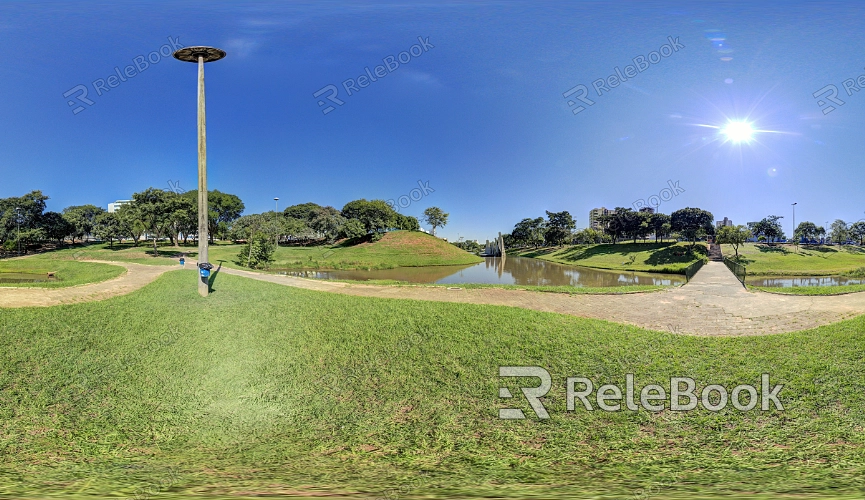Why are my HDR textures not displaying correctly in Unity
In 3D rendering and game development, HDR (High Dynamic Range) textures are essential for enhancing visual realism. They're commonly used in projects that require complex lighting effects. Software like 3ds Max, Blender, and Unreal Engine utilize HDR textures to boost environmental lighting and reflections. However, when applying HDR textures in Unity, you might face issues such as textures appearing too bright, too dark, or distorted. This article will explore the common causes behind these issues and guide you through solutions to ensure HDR textures display correctly in Unity.

1. Check HDR Texture Import Settings
Unity provides several import settings for textures, which directly affect how they appear in your scenes. If your HDR textures aren’t displaying correctly, the first step is to review their import settings.
Ensure that the HDR texture file format is either .hdr or .exr, as these formats support high dynamic range data.
In the import settings, check the color space configuration. Incorrect color space settings can make the texture look overly dull or washed out. It’s recommended to set the color space to Linear, particularly for projects using physically-based rendering (PBR).
2. Ensure the Camera Has HDR Rendering Enabled
For HDR textures to show their full range of brightness and colors, your camera needs to support HDR rendering.
Select the main camera in Unity and open the Inspector panel.
Under Rendering Settings, ensure that the HDR option is checked. If HDR rendering is disabled, the textures may lose brightness and contrast, leading to incorrect display.
3. Adjust Lighting and Exposure Settings
HDR textures sometimes appear too bright or too dark due to unbalanced lighting or exposure settings. Unity offers various tools to fine-tune lighting to match your scene’s needs.
Open Unity’s Lighting Settings panel and adjust the Ambient Light intensity and Skybox brightness.
Use the camera’s exposure controls to further fine-tune the balance between highlights and shadows, ensuring that none of these elements are distorted.
If the scene looks too bright or dim, you may need to lower or increase the light intensity affecting the HDR textures.
4. Use Post-Processing Effects to Enhance the Display
Post-processing effects are crucial for optimizing how HDR textures appear in a scene. Effects like Tonemapping and Global Illumination can significantly improve HDR rendering, making it more natural.
Install and enable Unity’s Post-Processing Stack.
Add a Post-Processing Layer to your camera and enable effects like tonemapping and global illumination to balance the brightness and color of the HDR textures.

5. Ensure Proper Materials and Shaders
The materials and shaders you use in Unity can also impact how HDR textures are displayed. If you’re using a shader that doesn’t support HDR, the texture might not render as expected.
Make sure your objects use Unity’s Standard Shader, which supports physically-based rendering and HDR textures.
Adjust the Metallic and Smoothness parameters of the material to fit your scene. These settings will affect how the texture responds to lighting and reflections, especially when using HDR environments.
6. Reflection Probe Configuration
HDR textures not only affect lighting but also contribute to the reflection data of objects. If your Reflection Probes are not properly set, reflections in your scene might appear distorted.
Add a reflection probe to your scene and adjust its range to cover all key objects.
Tweak the resolution of the reflection probe to ensure it captures enough detail without appearing blurry.
Set the probe’s update mode to either Realtime or Baked, depending on your project’s needs.
7. Optimize HDR Texture Resolution
HDR textures are often high-resolution, which can strain performance. If you notice performance issues like lag or stuttering during HDR texture display, you can optimize it by reducing the texture resolution or using compression.
In the import settings, adjust the texture resolution to reduce memory usage.
Use a compression format designed for HDR images, such as BC6H, to maintain quality while improving performance.
8. Dynamically Update HDR Textures
In some projects, you might need to dynamically update HDR textures based on time or environment. If HDR textures aren’t displaying properly during transitions, it might be due to improper loading or application.
Use Unity’s scripting capabilities to load different HDR textures during runtime and ensure smooth transitions without delay or display issues.
Consider asynchronously loading textures to optimize performance, ensuring seamless texture swapping in the scene.
By following the steps outlined in this article, you should be able to identify the causes behind incorrect HDR texture displays in Unity and apply the appropriate fixes. Whether it’s tweaking the import settings or balancing lighting and exposure, these methods will help you enhance the visual quality of your HDR textures. For high-quality HDR resources, Relebook offers a wide variety of 3D models, textures, and assets for SketchUp and 3ds Max, helping you achieve outstanding visual results in your projects.

